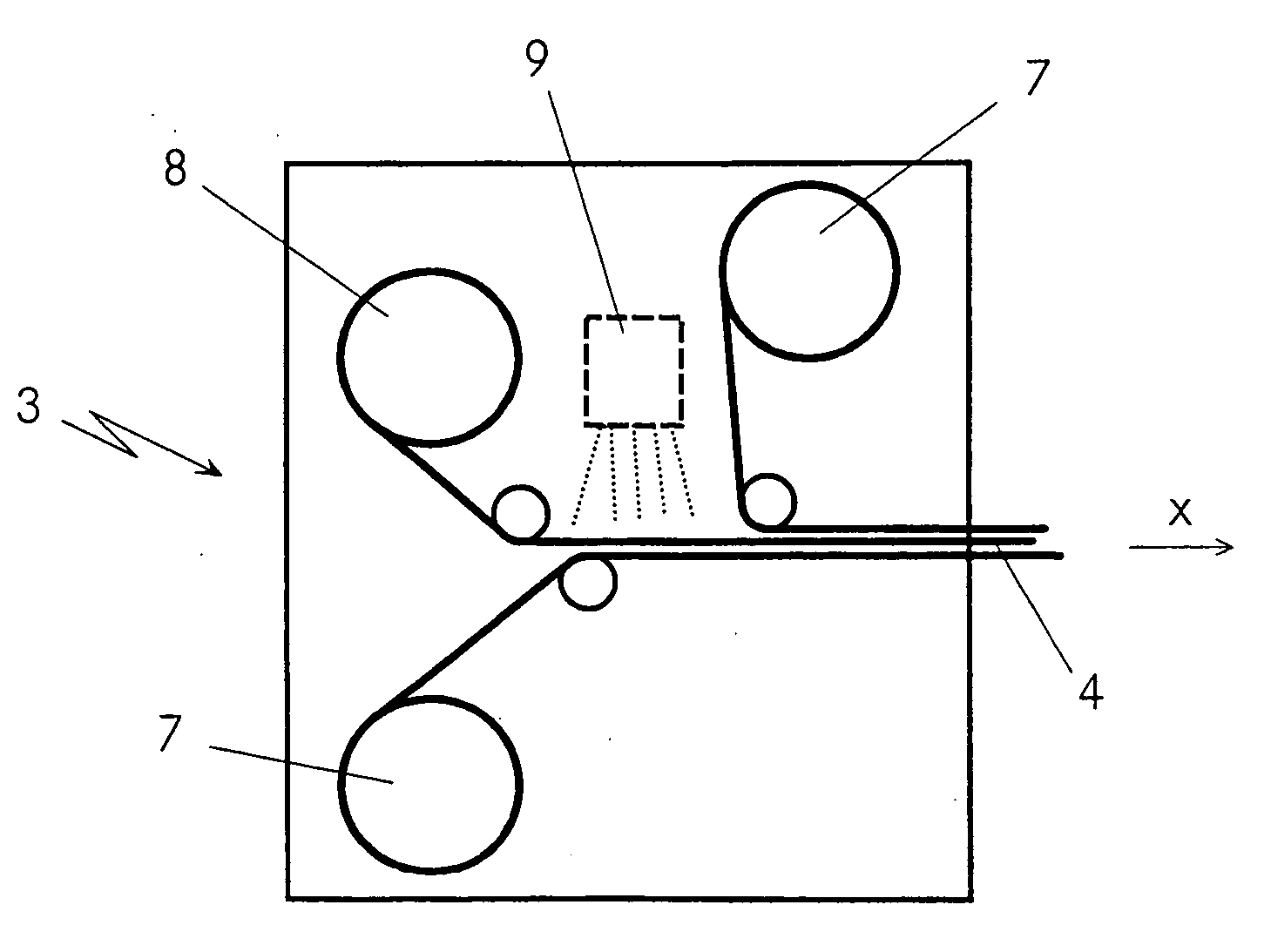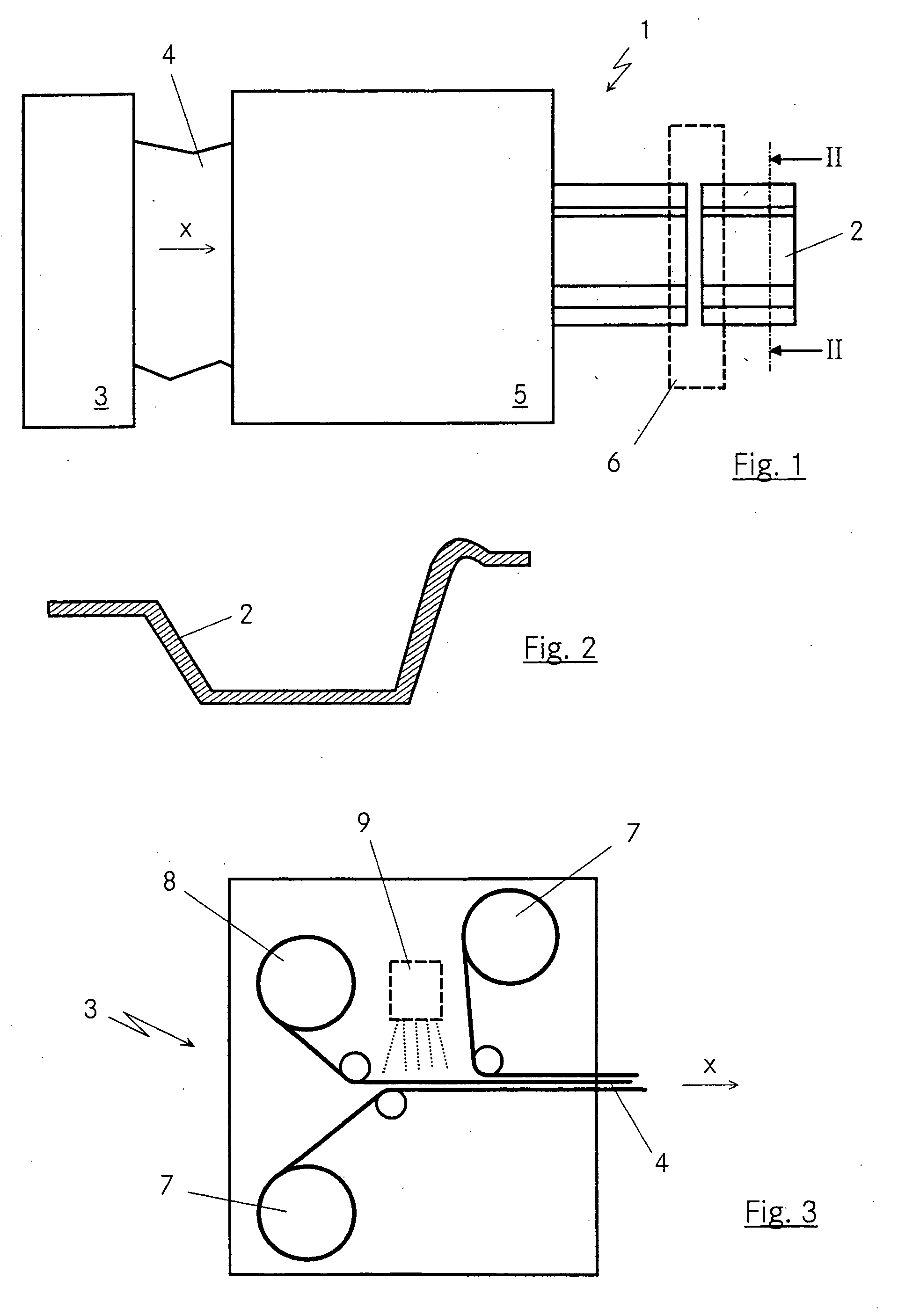Process for producing plastic parts
a plastic and processing technology, applied in the direction of adhesives, etc., can solve the problems of inability to deform, high labor intensity, and substantial loss of stability or rigidity, and achieve the effect of saving time, cost and production spa
- Summary
- Abstract
- Description
- Claims
- Application Information
AI Technical Summary
Benefits of technology
Problems solved by technology
Method used
Image
Examples
Embodiment Construction
[0037] In FIG. 1 an exemplary conceivable device 1 for production of components 2 is illustrated. This device 1 is comprised essentially of a device 3 for providing plastic material 4. Both the device 3 as well as the plastic material 4 could be variously designed or constituted, as will be described later.
[0038] Leaving the device 3, the plastic material 4 then reaches a roller profiling 5. The plastic material 4 is deformed there into the component 2 by various rollers, which are changeably controllable in their position and speed for example by CNC. By a roller profiling 5 of this type, which is frequently referred to as roller deforming, various two dimensional or—by a bending in the direction of advance x of the plastic material—three dimensional component shapes can be realized. FIG. 2 shows for example one possible cross section through a conceivable two dimensional shape of such a component 4.
[0039] The actual manufacture of the component 2 from the plastic material 4 occu...
PUM
| Property | Measurement | Unit |
|---|---|---|
| Speed | aaaaa | aaaaa |
| Metallic bond | aaaaa | aaaaa |
| Plasticity | aaaaa | aaaaa |
Abstract
Description
Claims
Application Information
 Login to View More
Login to View More - Generate Ideas
- Intellectual Property
- Life Sciences
- Materials
- Tech Scout
- Unparalleled Data Quality
- Higher Quality Content
- 60% Fewer Hallucinations
Browse by: Latest US Patents, China's latest patents, Technical Efficacy Thesaurus, Application Domain, Technology Topic, Popular Technical Reports.
© 2025 PatSnap. All rights reserved.Legal|Privacy policy|Modern Slavery Act Transparency Statement|Sitemap|About US| Contact US: help@patsnap.com


